
SEO is tough.
It’s time-consuming and hard to implement.
And, because of that, I have a free SEO training course and even an SEO tool to help you out.
But what if you don’t have the time to go through a 21-part training series? Or what if my SEO tool doesn’t give you the step-by-step instructions you need?
What other options do you have?
Well, today I thought I would make your life easier by sharing 21 of my own SEO and content marketing worksheets and templates to help you get higher rankings in less time and, best of all, with less effort.
Marketing definitions
Let’s start off with the basics.
In marketing, we all use terms that might be a bit confusing.
Sure, you probably know what SEO is and what it means, but what about terms like CPC?
Or more complicated ones like CAC, BANT, LTV, or even NPS.
I’ve created marketing acronyms glossary that breaks down what each marketing acronym stands for and what it means.
So, when you are reading any marketing blog or book, you’ll now know what these “unusual” acronyms and words mean.
Local SEO
If you want to rank for local-based terms, it’s not just about optimizing for keywords. There’s much more to local SEO and a lot of it has to do with your landing page.
Here’s a template that breaks down the anatomy of an optimized local landing page.
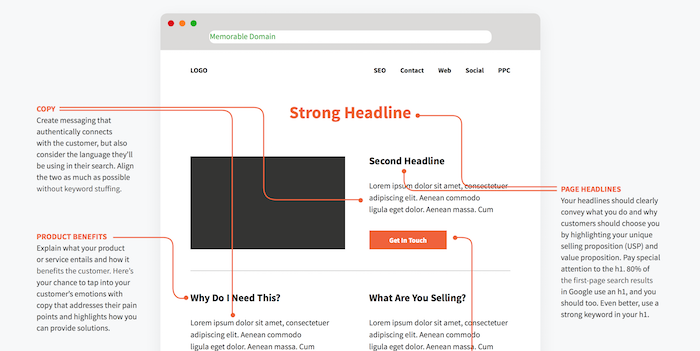
What’s cool about this template is that it breaks down the percentage of impact each element will have when it comes to your SEO.
Keyword research
The easiest way to find keywords is to use tools like Ubersuggest.
Just type in a keyword…
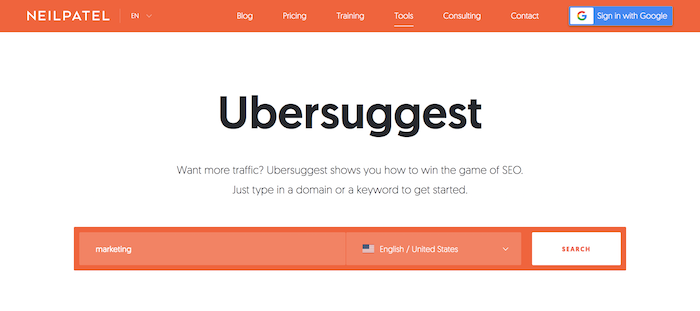
You’ll see a report that looks like this…
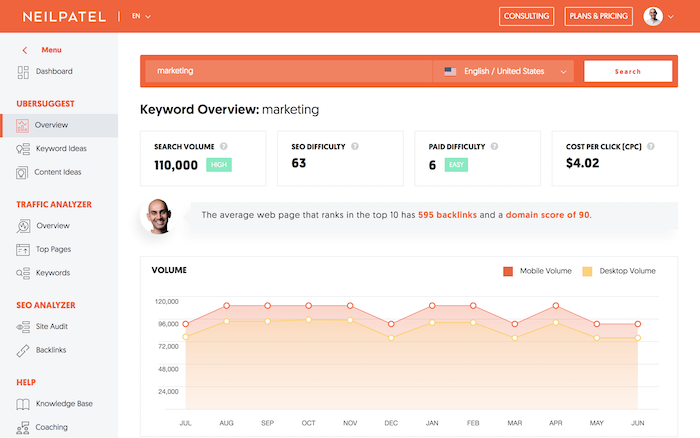
Then click on “Keyword Ideas” in the left-hand navigation.
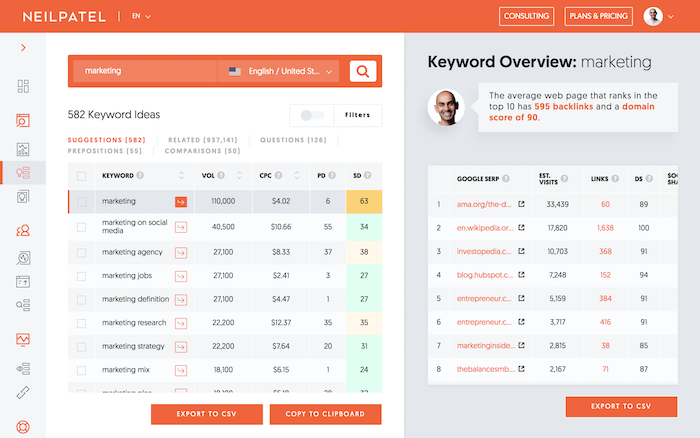
But as you go through the list of thousands of thousands of keywords, how do you know which ones are valuable?
Sure, in general, if a keyword has a high “volume” it means it is searched a lot, which is good. And if it has a high “CPC” it means that advertisers are willing to spend a lot to advertise on that keyword, which again is good because it typically means that the keyword drives qualified traffic that causes purchases.
And if a keyword has a low SD (SEO difficulty) that’s great as well because it means the keyword is easier to rank for.
When looking for keywords, ideally you want ones that meet all 3 of those requirements.
But just because a keyword doesn’t meet all of those 3 requirements doesn’t mean that it isn’t good for you and your strategy.
There’s actually a lot of hidden gems out there that don’t meet all of those requirements because marketers don’t know they are lucrative.
So to help you find the best ones, I’ve created a 220 profitable keyword cheat sheet. It breaks down keywords that have buyer intent for all industries.
Now, I want you to go back to Ubersuggest to perform a keyword search and look for keywords that contain some of the phrases within my profitable keyword cheat sheet. Those are keywords you’ll want to target.
Seriously, just spend 5 to 10 minutes hunting for keywords. Perform at least 10 searches and you’ll find some gold.
As you are doing the keyword research, you’ll find that it may be difficult to remember and keep track of all the amazing keywords you are finding, which leads me to the Ubersuggest keyword planner spreadsheet.
You can use it to keep track of the keywords you want to focus on first, second, third…
Trust me, it will make your life simpler.
SEO factors
There are over 200 factors in Google’s algorithm.
But let’s face it, you aren’t going to optimize for each of them because it takes too much time.
And even if you have the time, where do you start, and which ones do you fix first?
Well, an easy solution is to go here and put in your URL.
You’ll end up with a report that looks like this…
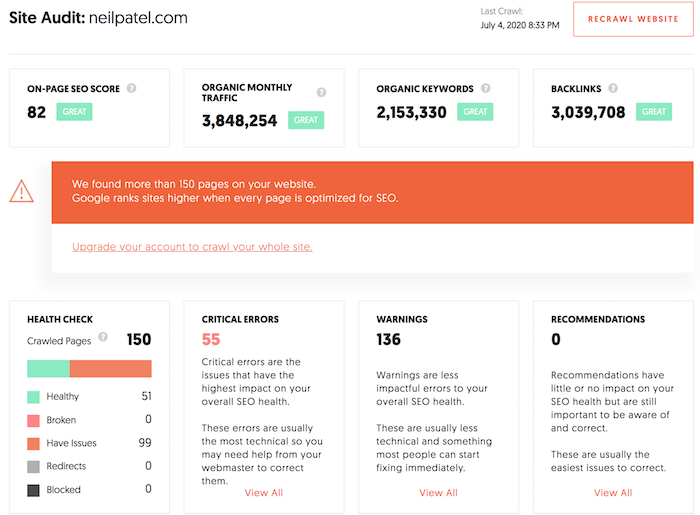
And if you click on any of the error boxes, it will break down what to fix in order.
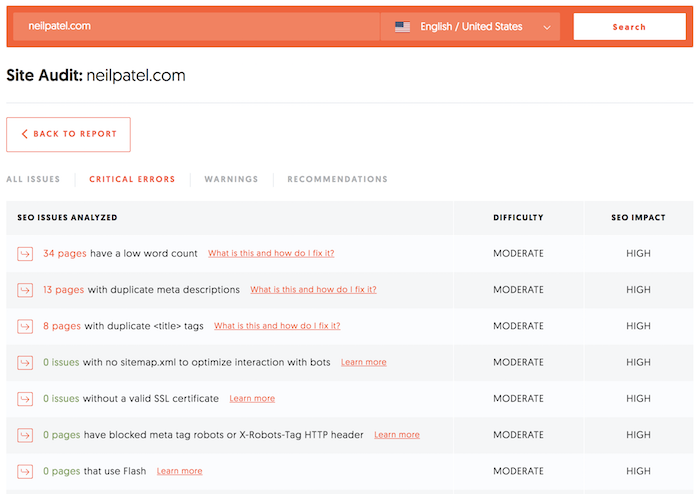
You can then click through and get details for each SEO error.
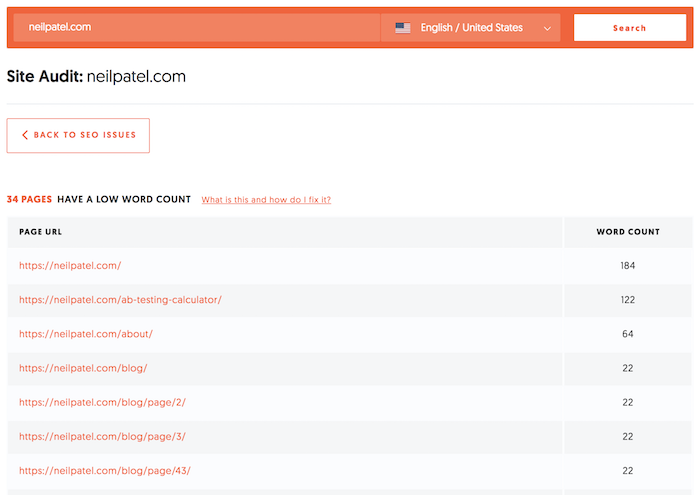
And although I highly recommend that you fix your errors in the above report (it’s a great way to boost your rankings), you don’t want to just keep playing defense.
You want to start playing offense with your marketing and make sure that you are doing things right as you release new pages or make changes to your website.
So I’ve created an SEO factors cheat sheet that breaks down important factors that you need to think about when creating new pages on your site.
It’s great to pass along to your team members and your content writers as well (and even your developers!) so you can make sure that everyone is on the same page.
And don’t worry, it doesn’t break down all 200 factors as that would be too overwhelming… it focuses on the important ones that you need to get right from day 1.
But if your team does want something more detailed, I’ve also created a thorough SEO checklist that is 20 pages long.
Anytime my team is doing major changes like a redesign or change our site structure, I make sure that they go through that checklist as it helps ensure we at least maintain our rankings if not increase them.
Supercharging your content
Content marketing is a key ingredient to more search traffic.
But these days, there is so much content on the web. How do you make sure that your content stands out and ranks?
Just think of it this way, there are over a billion blogs on the web.
Let that sink in.
That’s such a large number it comes out to roughly 1 blog for every 7 people.
Do you think we really need more blogs?
Not really… we just need good ones.
And one way to make your content better is to use data and research that can be integrated within your content as that helps create more backlinks.
For example, look at this post I created on the future of content marketing. It contains tons of charts and data.
People loved it so much that it generated 414 backlinks from 110 referring domains.
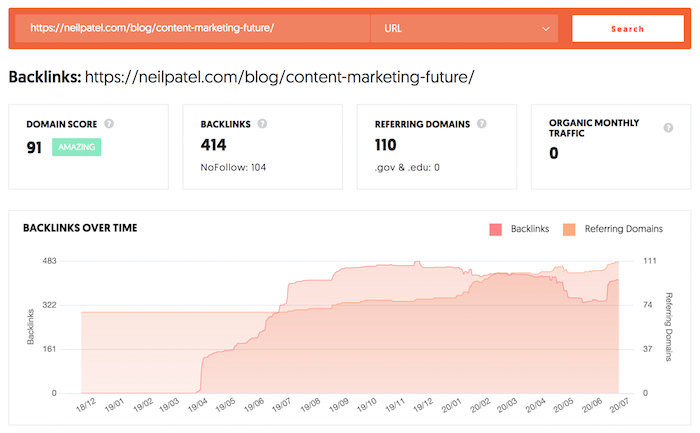
PS: If you are wondering how many backlinks you have or any piece of your content has, just put your URL in here.
And best of all, I did it all without even sending one outreach email.
But of course, you probably don’t have the time, resources, or team to do the custom research we did.
So how do you create content that contains data, amazing insights, and research that people love? Well, I’ve created a data sources document that you can use to easily find all of the information I just mentioned.
It will break down sites that contain unique data, charts, and research that you can cite within your content so you can naturally build more backlinks like me.
And on top of that, if you really want to supercharge your content and make sure that it not only drives traffic but more importantly sales, here are a few more templates and worksheets I’ve created for you:
- WHIPS – the WHIPS template breaks down the cycles people go through before they purchase. Such as someone could be a window shopper, in which they are interested in purchasing something, but maybe not from you. Or they may know that they have a problem and are just looking for the right solution. No matter what situation your potential customers are in, the WHIPS template breaks down each of them so you can create the appropriate content that fits their needs.
- 20/20 Rulebook – whether it is you who writes your own content or if you have writers, have them follow the 20/20 Rulebook. It breaks down the 20 rules that your content needs to follow if you want it to do well. Now in many cases, you won’t follow all of them, but your goal is to get as close to 20 as possible.
- Content creation template – if you want my framework to write blockbuster blog posts, follow the content creation template. It’s a 20-page process, but once you use it a few times you’ll quickly get the hang of it and find that it’s easy to remember. And I’ve found that when people use it to write 6 blog posts, by the 7th they don’t even need to look at it because they know the steps by heart.
Content editing
I know my content has grammatical and spelling errors every once in a while, but my content does well.
One of the reasons is I follow the templates and worksheets that I’ve mentioned above.
But it is because I put a lot of emphasis on editing.
See, once you write content, let it sit for a day. It will give you time to think about how it can be made better.
And the next day, you’ll want to go in and edit it.
Don’t worry, editing doesn’t have to take a lot of time… I’ve broken down our editing hacks into 3 worksheets:
- 10 Commandments – this worksheet breaks down the 10 things to look for when editing. If you are short on time, start with this worksheet because you can typically get your editing done in less than 30 minutes by following the steps.
- Editing checklist – and if you have someone dedicated to editing on your team, have them complete this checklist each time they edit any content.
- Step-by-step editing guide – for those of you who really want to master editing, here is a 27-page guide that breaks down each step of the editing process. I’ll be honest with you, it is a bit overkill, but it is great if you have someone dedicated to just editing.
You may find the editing process a bit overwhelming, and if that is the case, stick with the checklist or the 10 commandments.
You can also use this editorial calendar to help you out. It is an Excel file, but you can load it up using Google Sheets for free.
Fine-tuning your content
Whoever says editing is the last step of content marketing is lying.
Going the extra mile by fine-tuning little things and making those small tweaks is what can help your content go viral.
Look, no matter how good of a marketer one might be, you will make mistakes. Even if you make very few, there is always room for improvement.
If you have already published hundreds (if not thousands of blog posts), don’t worry. You can tweak them still.
So, lets fine-tune your content to get that extra traffic.
Every little bit adds up, right?
It’s how I grew my SEO traffic to over 4 million visits a month:
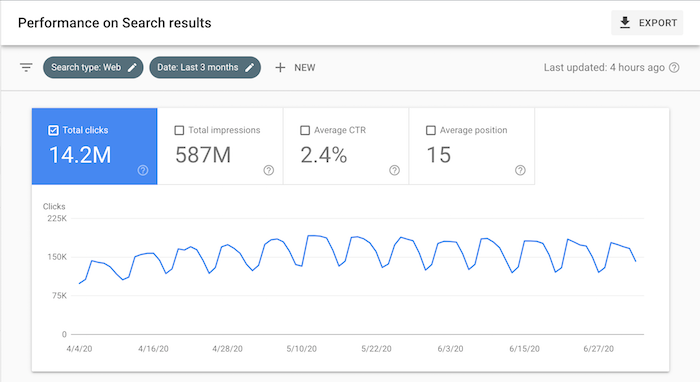
- Headline formula – as David Ogilvy once said, you spend 80 cents on the dollar in the headline. And it’s true, 8 out of 10 people will only read your headline, but only 2 people will click through and read the rest of your copy. So follow this headline formula swipe file to create amazing headlines.
- Constructive criticism – having the attitude that you can always get better will help you beat your competition. The moment you think you know it all is the moment you lose. This worksheet will teach you how to critique your own content without being biased. I love using it to critique my competitions’ articles as it helps me better understand how to beat them.
- WordPress SEO cheat sheet – you’re probably using WordPress like me. And if you are, fine-tune your blog with this cheat sheet. It’s an Excel file, but you can use Google Sheets to open it up.
Don’t forget to build links
Link building sucks. But if you don’t build links, you won’t rank well.
I wish there was another way… but there isn’t. 🙁
As you are building links you may be wondering, am I building the right links or the wrong links?
Are my existing links good? Do I need to disavow any of them?
For this reason, I’ve created a link-building scorecard. You can use Google Sheets to view it.
It will help you keep track of your links, which ones are good or bad, and what you need to fix so that you can reduce your risk of a Google penalty.
Once you download the link building scorecard, you’ll also want to download these two worksheets:
- Link building search operators – this worksheet teaches you how to use advanced search parameters within Google to find new link building opportunities. It is simple yet very effective.
- Outreach templates – once you find link opportunities, you’ll have to send outreach emails to convince sites to link to you. Here’s my outreach template. It contains 24 pages of outreach emails that you can use to build more links.
Conclusion
I know I’ve given you a lot of templates, worksheets, and cheat sheets, but you don’t have to use them all.
Use the ones you need and just save the rest for later. It will make your life easier, helping you get results faster and in less time.
And if you are wondering how much time you should spend on each task, here is the SEO taskmaster worksheet.
It breaks down all of the SEO tasks you need to complete, how long each will take, the importance of each one, and how to prioritize them because there is no way you can do everything in one day.
So, what do you think of all of these templates? Are you going to use them? And what has worked for you that I didn’t discuss here?
The post SEO Pack: 21 Worksheets, Templates, and Cheat Sheets appeared first on Neil Patel.
from Blog – Neil Patel https://ift.tt/3f2DUrY

I am looking forward to reading more from this author. Exceptional writing!
ReplyDeleteFind the best playboy job in India at Gigolomania.com.